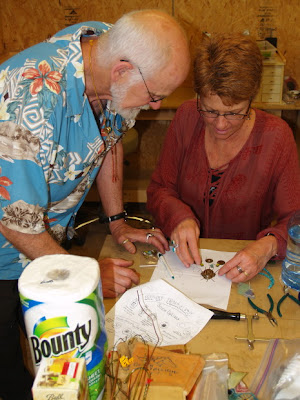"We want one class of persons to have a liberal education, and we want another class of persons, a very much larger class, of necessity, in every society, to forgo the privileges of a liberal education and fit themselves to perform specific difficult manual tasks."
The following is from Jonathan Baldwin Turner May 13, 1850:
All civilized society is, necessarily, divided into two distinct co-operative, not antagonistic, classes: a small class, whose proper business it is to teach the true principles of religion, law, medicine, science, art and literature; and a much larger class, who are engaged in some form of labor in agriculture, commerce, and the arts. For the sake of convenience, we will designate the former the professional, and the latter the industrial class; not implying that each may not be equally industrious, the one in their intellectual, the other in their industrial pursuits...Does it seem to you that one of these speeches influenced the other? The defining difference between these is set out in Wilson's first two words. "We want". Jonathan Baldwin Turner was a major advocate of Public Land grant Universities throughout the US. While he thought class distinctions were inevitable he worked to minimize their effect and he gathered some angry responses to statements like the following:
"...a classical teacher who has no original, spontaneous power of thought, and knows nothing but Latin and Greek, however perfectly, is enough to stultify a whole generation of boys and make them all pedantic fools like himself. The idea of infusing mind, or creating or even materially increasing it, by the daily inculcation of unintelligible words--all this awful wringing to get blood out of a turnip--will, at any rate, never succeed except in the hands of the eminently wise and prudent, who have had long experience in the process; the plain, blunt sense of the unsophisticated will never realize cost in the operation. There are, moreover, probably, few men who do not already talk more, in proportion to what thy really know, than they ought to. This chronic diarrhea of exhortation, which the social atmosphere of the age tends to engender, tends far less to public health than many suppose."He goes on further in his Griggsville Address:
"The most natural and effective mental discipline possible for any man arises from setting him to earnest and constant thought about things he daily does, sees and handles, and all their connected relations and interests. The final object to be attained, with the industrial class, is to make them thinking laborers; while for the professional class we should desire to make laborious thinkers; the production of goods to feed and adorn the body being the final end of one class of pursuits, and the production of thought to do the same for the mind the end of the other. But neither mind nor body can feed on the offals of preceding generations. And this constantly recurring necessity of reproduction leaves an equally honorable, though somewhat different, career of labor and duty open to both, and, it is readily admitted, should and must vary their modes of education and preparation accordingly."















































